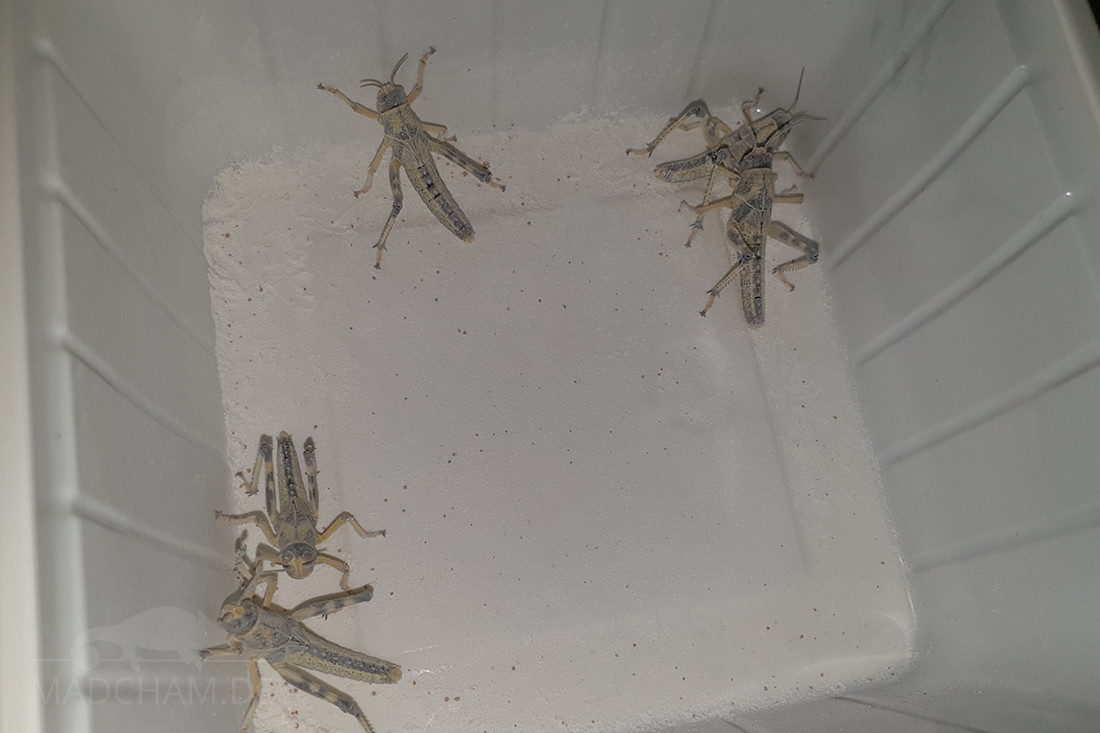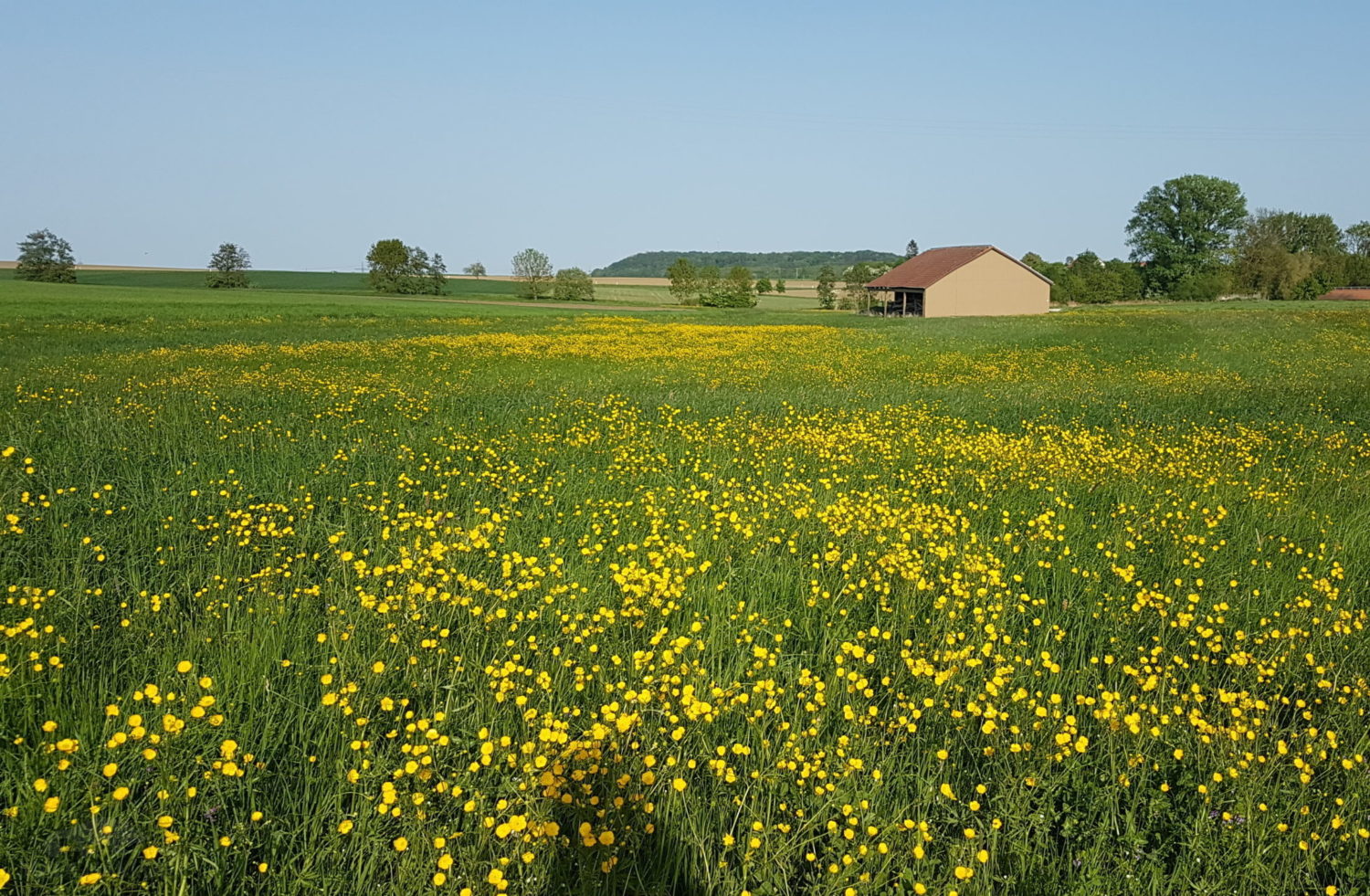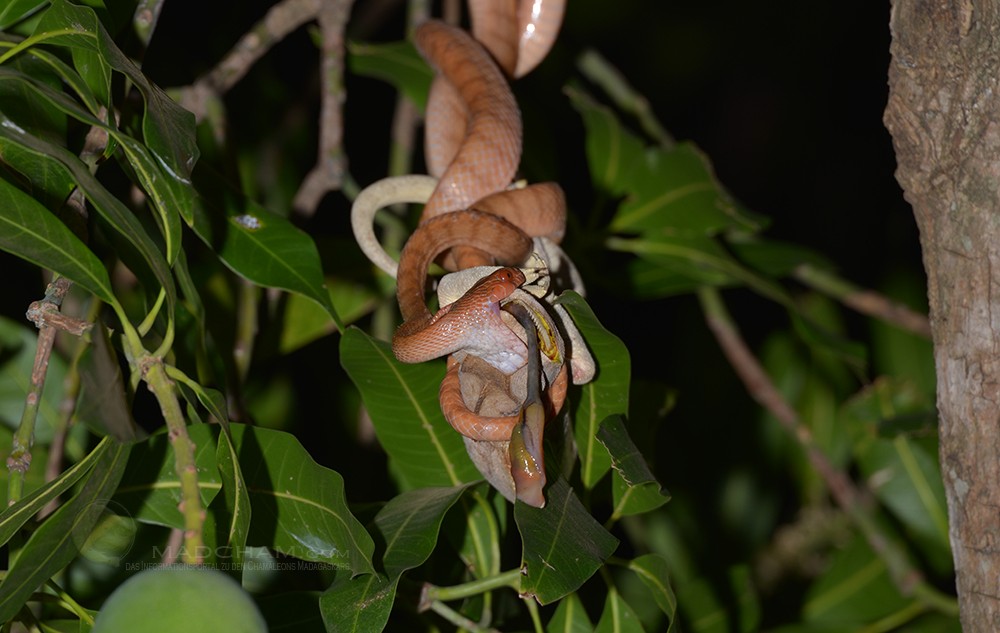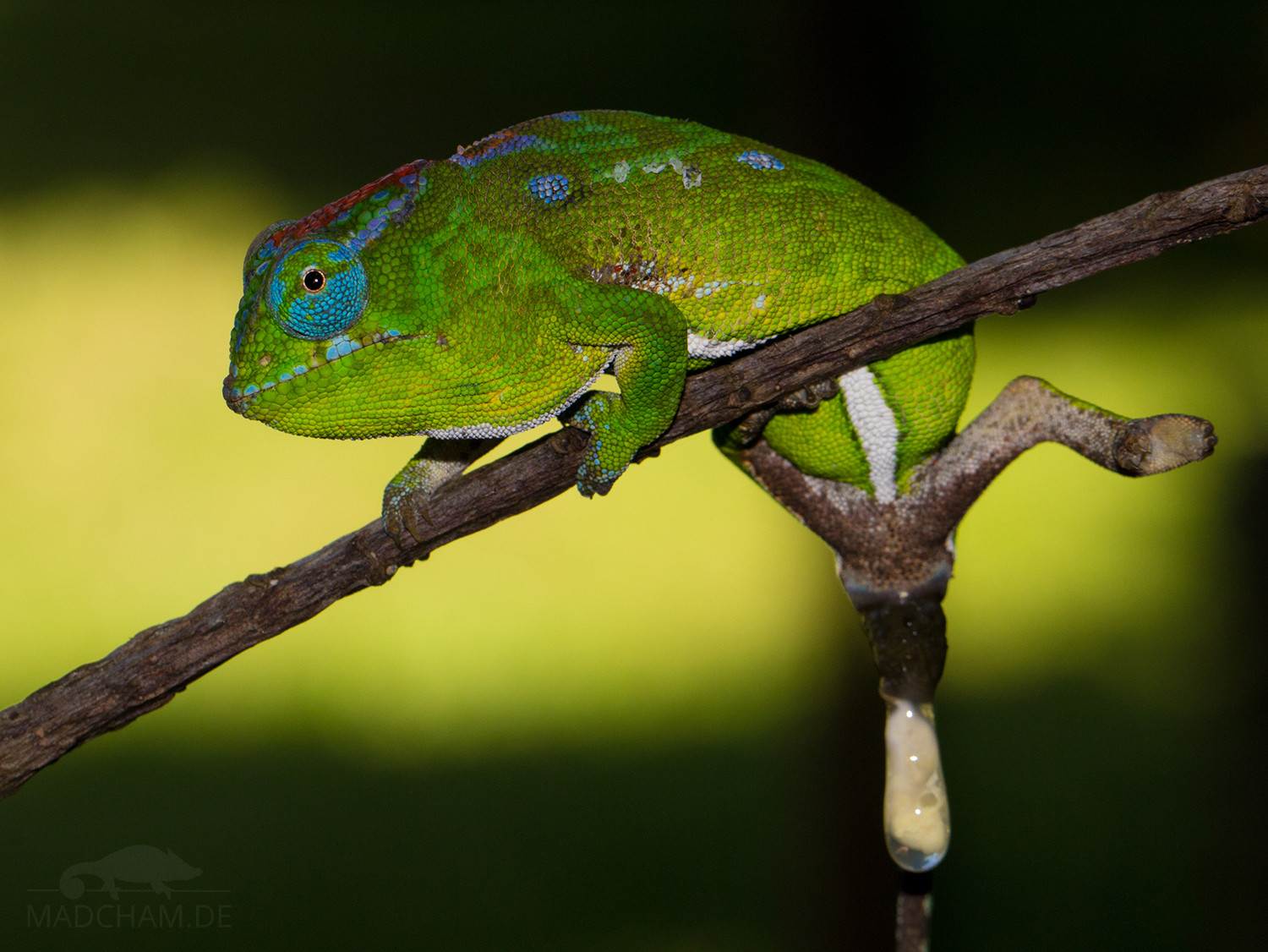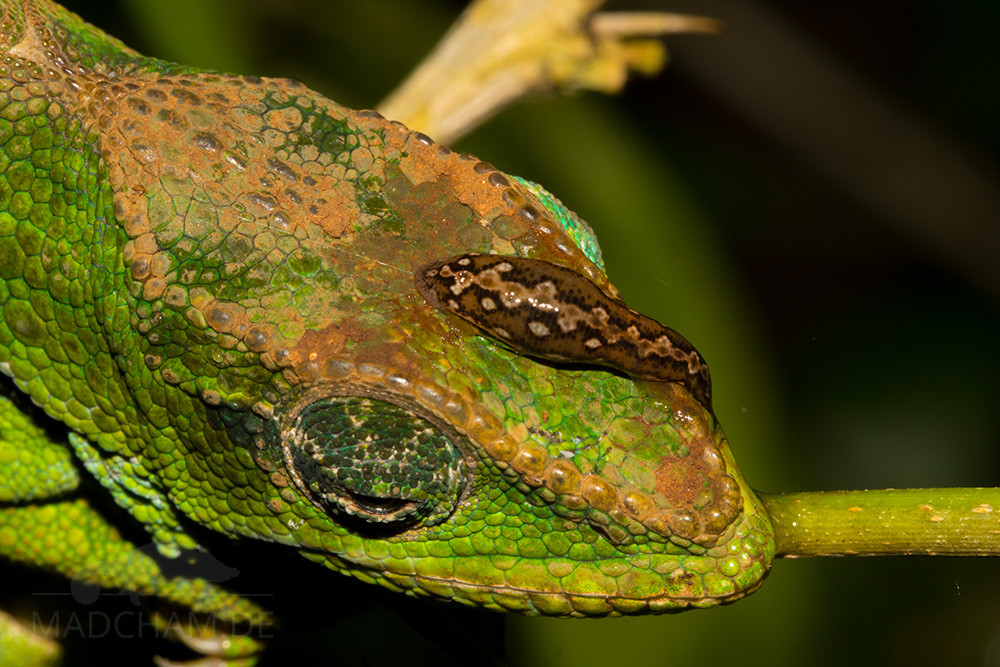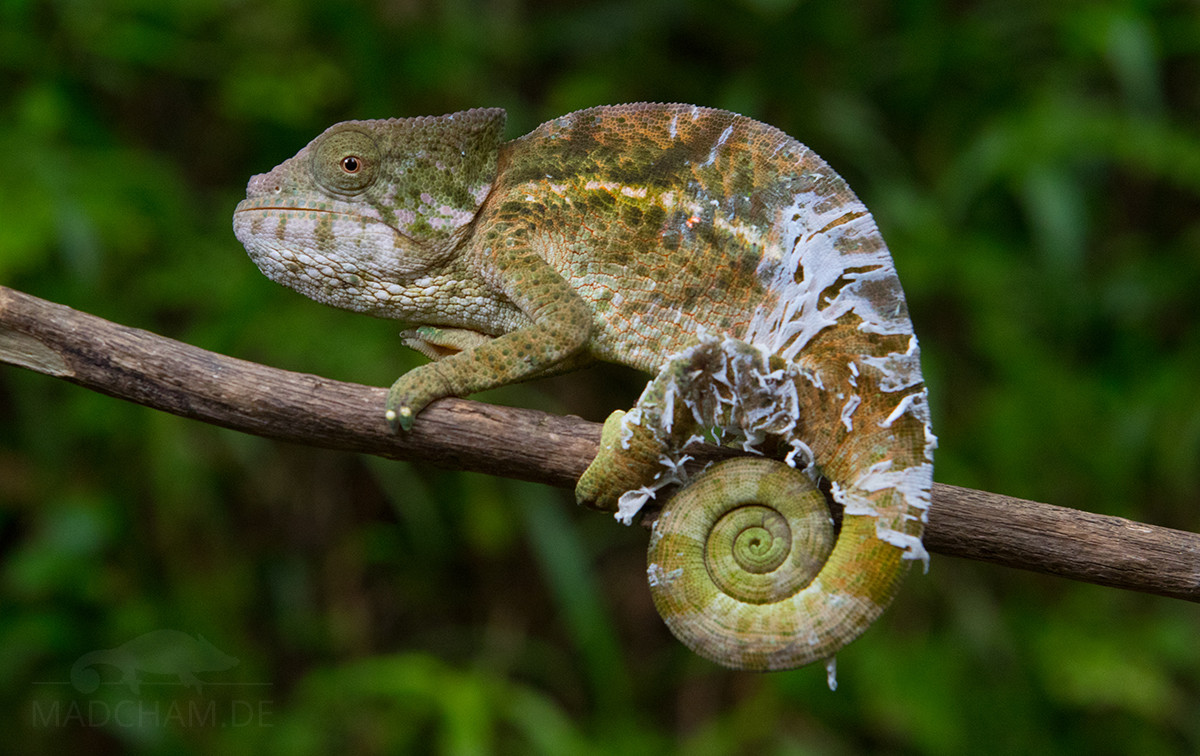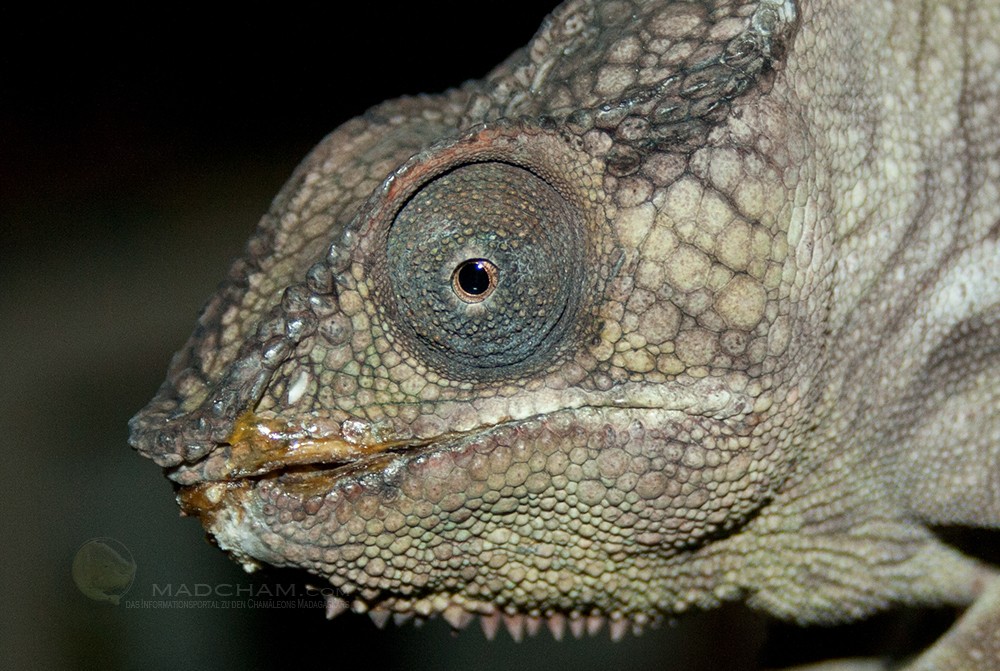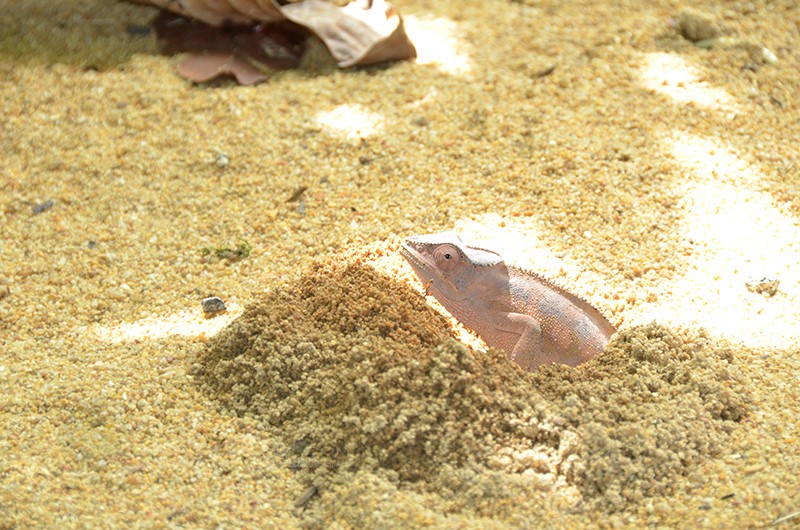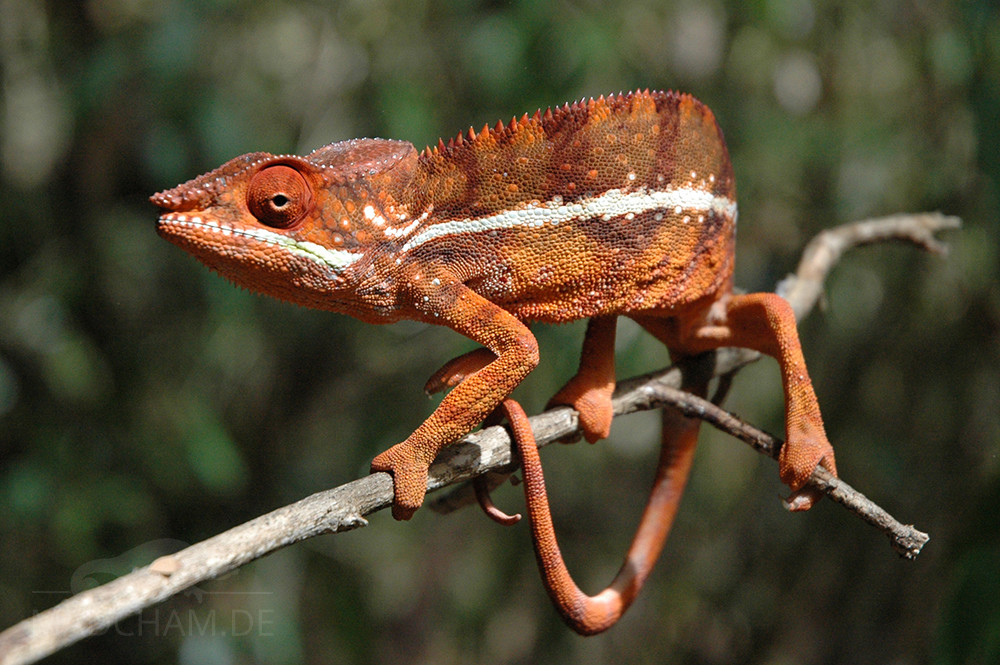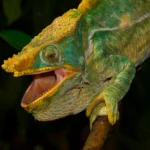Supplementation
Supplementation or supplementation in terraristics means that a feeder is dusted (powdered) with vitamin or calcium powder before feeding it to a chameleon. The intention is that a given amount of vitamins and calcium...
Catch your own feeders
During sommer, meadows offer a rich meal for chameleons – you just have to harvest it. Feeders from the meadows have no need for gutloading and offer a wide variety. From time to time,...
Cohabitation
Chameleons among each other Most chameleons, e.g. Furcifer pardalis, can only be kept individually, as they are very aggressive within the species. Pairings are often only possible for the duration of the pairing itself....
Feces and urates
Feces and urates In contrast to humans, dogs, cats, and other mammals, chameleons do not release liquid urine. Instead, they produce so-called urate, which consists of the salts of uric acid. Urat is a...
Parasites
Parasites are a common problem in chameleons, especially in wild-caught chameleons or captive-bred animals from large breeding stocks. Basically, you distinguish between endoparasites, which colonize the inside of a chameleon, and ectoparasites, which are...
Shedding problems
Shedding problems A shedding problem means that the chameleon has shed almost completely, but some pieces of the old skin have been remaining for days. The old skin looks milky in this area or...
Mouth rot
Mouth rot – what is it? „Mouth rot“ is a common term for the inflammation of mouth mucosa in chameleons. The medicinal term is stomatitis, in the case of the already affected bone and...
Egg-binding
What means egg-binding? Egg-binding describes the fact that a female cannot lay her ready-to-lay eggs. Causes There are many things that can cause a chameleon to be egg bound: The eggs are too much...
Local form Ankarana West
Distribution of the local form: Ankarana national park is in northwest Madagascar in region Diana. It is separated into two large areas by the Tsingys, an impressive needlestone formation. One side is the east,...
Local form Ankarana East
Distribution of the local form Ankarana East The Ankarana National Park is located in the northwest of Madagascar in the Diana region. By the Tsingys, an impressive needle rock formation, the National Park is...

